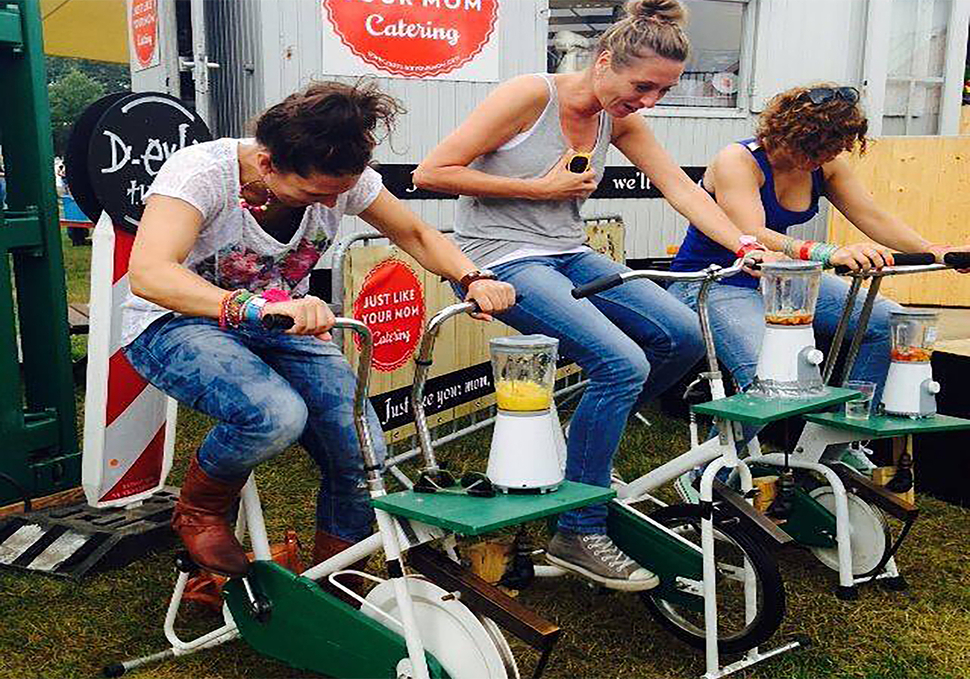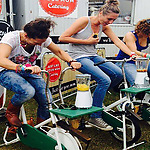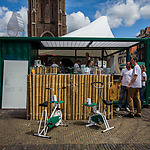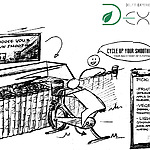Have you have ever thought about the fact that almost all fruits and vegetables you find in supermarkets look so perfect? For example the apples, tomatoes, cucumbers and sweet peppers per specie are all evenly shaped and are almost the same size. However, this doesn’t mean that misshaped fruits and vegetables do not exist. In fact, there is a huge amount (about 40%) of products that just doesn’t meet the Dutch visual standards, but are just as tasty and safe to eat as their normally shaped peers. This so-called ‘ugly food’ just used to end up as waste, or in one of the best possible scenarios; as animal food. Studies found that for Europe alone the amount of food that is wasted on yearly base is 89 million tonnes, underlining the growing need to reduce the amount of fresh produce thrown away.
One of the first changes for the ‘end of life’ destination of ugly food was made by a campaign of the French supermarket ‘intermarché’. They started selling ugly food for a reduced price, therewith achieving less fruits and vegetables being wasted and, for consumers very important, offering an affordable alternative to cheap but unhealthy products. To convince the consumers of the high quality and good taste, they were provided with soup and fruit juices made from these misshaped fruits and vegetables. The result? A big success! Multiple supermarkets followed their example. The European Union has made 2014 the year against food waste, thereby addressing the importance of the subject for European governances.
A Dutch example of a supermarket that tries to do something against these amounts of food being wasted, is the Albert Heijn. They are selling a box full of ‘buitenbeentjes’, or in English ‘misfits’ for a reduced price. However, these boxes are only sold online, so most of the consumers do not know about their existence.
My own first real confrontation with the way the Netherlands is dealing with these misshaped fruits and vegetables was last year during the course “Sustainable Innovation in Practice”, an interdisciplinary course (also known as D-exto (Delft Experience Tomorrow)) that is an initiative to create a sustainable innovation engine on the Delft campus presenting appealing technical designs or applications in a sustainable pavilion. As pilot, this pavilion each year travels to different events and festivals in the Netherlands.
As part of the ‘bar-team’ our assignment was to come up with a sustainable and interactive innovation for a bar that was able to positively trigger visitors of those festivals and events by provoking thought and motivating change in lifestyle. We as team came up with the idea to make a smoothie bar in which smoothies made from this ugly food were served.
Because the best way of getting visitors of events and especially festivals more conscious about the importance of sustainability, in our case food waste, is not to lecture them, we asked ourselves how we could make them more aware of the subject without boring them. So we created a fun, easy and by all means interactive way to serve these smoothies to the people and at the same time making them aware of food waste. This resulted in our bar having a set of three blender bikes; second hand home trainers converted into bicycles that, when cycled on by the visitors, are able to blend a smoothie. Next to addressing the food waste problem, these blender bikes were also able to make people more aware of their daily energy use. At home it is easy to plug in your blender (and other devices), but how much energy this blending costs is not very known. By having to use their own muscle power, people immediately realised that their devices, like blenders, use a lot of energy, and that when they forget to turn them off when finished, this costs valuable extra energy.
Although given a bit more attention, the problem of food waste (even before it reaches the consumer) could be more visible and alternatives should be implemented in current systems. Because, in my opinion these shown examples are good initiatives, but are lacking visibility and continuity, little people are aware of their existence and have to be actively searching for them to get to know about them or, when they do know, they will easily forget about them and we all will backslide into old habits. I think the project my team did for D-exto is a good example of how you could make more people aware of the problem of food waste (and energy consumption) on an attractive, easy, fun and interactive way that they will remember, share with their friends and family and even stand in line for!
Some other interesting links:



